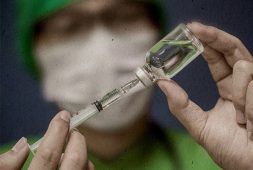
Women of color face a heightened likelihood of receiving a breast cancer diagnosis prior to reaching 50 years of age, in contrast to white women. The potential to save nearly 20 percent more lives could be realized through the implementation of earlier breast cancer screening, particularly benefiting women of color.
A newly proposed recommendation statement by the U.S. Preventive Services Task Force (USPSTF) suggests that women should commence receiving mammograms every two years upon turning 40. However, this guidance does not encompass women with a notably elevated risk due to specific genetic or other factors, as such individuals might require earlier screening.
If ratified, this revised guideline will supplant the existing 2016 USPSTF recommendation, which advised women of average risk to initiate breast cancer screening every alternate year between the ages of 50 and 74. Women in their forties were recommended to engage in screening discussions with their healthcare providers.
The U.S. Preventive Services Task Force defines itself as an autonomous, volunteer committee comprised of national authorities in disease prevention and evidence-based medicine. This panel is both funded and appointed by the U.S. Department of Health and Human Services.
New Recommendations Could Save 20% of Lives
Beginning screening at age 40 instead of 50 or older could result in 19 percent more lives saved, as per the USPSTF report. “New and more inclusive science about breast cancer in people younger than 50 has enabled us to expand our prior recommendation and encourage all women to get screened every other year starting at age 40,” said the Task Force’s immediate past chair, Carol Mangione, MD, in a statement. “This new recommendation will help save lives and prevent more women from dying due to breast cancer,” Dr. Mangione added.
Dr. Natasha Monga, an Assistant Clinical Professor in the Department of Radiology at the Ohio State University Comprehensive Cancer Center in Columbus, views the new recommendations by the USPSTF for Breast Cancer Screening as a positive stride forward.
“However, annual screening mammography saves the most lives and is recommended by many major medical associations, including the American College of Radiology (ACR), Society of Breast Imaging (SBI), and National Comprehensive Cancer Network, among others,” Dr. Monga said.
The latest preliminary suggestion from the task force proposes that women at average risk should commence screening at 40 years of age instead of 50, aligning with the recommendations of the ACR, SBI, and the American Cancer Society, according to her statement.
“Starting annual screening at age 40 not only saves the most lives, it also allows us to detect cancers when they are smaller and more easily treatable, which may mean less aggressive intervention,” Monga explained.
The task force has introduced a fresh proposal that is available for public feedback until June 5th. Subsequent to this period, the task force will deliberate on whether to conclude and implement the proposal.
Mammograms Reduce Mortality by 40%
Approximately 30% of new cancer cases among women every year are attributed to breast cancer, ranking it as the second most prevalent after skin cancer, as reported by the American Cancer Society. The likelihood of a woman being diagnosed with breast cancer during her lifetime is 1 in 8.
Since 1990, mammograms have played a significant role in decreasing breast cancer-related deaths in the United States by almost 40%, according to the American College of Radiology.
New Draft Recognizes Risk May be Higher for Black Women
Susan Brown, RN, the senior director of patient education and information at the Susan G. Komen breast cancer foundation, emphasizes a significant aspect missing from breast cancer screening recommendations: the substantial variation in breast cancer outcomes among different populations.
The task force report highlights a stark statistic: Black women face a 40 percent higher likelihood of succumbing to breast cancer compared to white women. Moreover, beyond this disparity, women from Black and other minority groups have a higher probability of receiving a breast cancer diagnosis prior to reaching the age of 50. Additionally, these women are more prone to being diagnosed with advanced-stage and exceptionally aggressive forms of breast cancer, as pointed out by Monga.
“This makes annual screening mammography starting at age 40 even more essential for these women. It is recommended that all women, particularly Black and Ashkenazi Jewish women, have breast cancer risk assessment by age 25, and discuss with their doctor whether early, more intensive screening is needed,” Monga stated.
“Recent years have led to many studies detailing how other populations, particularly the Black community, could benefit from earlier breast cancer screening as a way to help achieve health equity,” Brown said.
According to Brown, there is evidence suggesting that tailoring screening guidelines based on individual risk factors could enhance the detection of breast cancer and ultimately lead to better outcomes for Black women.
“Health inequities from breast cancer require more than updated screening guidelines. They require complex, multilevel structural change in our healthcare systems to ensure Black women receive the care they need at each step of the breast care continuum of care,” she said.
Younger Women at Higher Risk for Worse Outcomes
Brown points out that the new task force report explicitly references young women. According to Brown, the inclusion of recent data from studies such as the Young Women With Breast Cancer Study is expanding our current understanding of breast cancer diagnoses among young women.
“While only approximately 20 percent of breast cancers are diagnosed in women under 50 years old, these people are more likely to have worse outcomes from their breast cancer,” she said.
More Research Needed to See if Additional Testing Improves Outcomes for Dense-Breasted Women
The task force further observed that approximately 50% of women exhibit dense breast tissue, potentially diminishing the effectiveness of mammograms. However, further investigation is imperative to evaluate the “benefits versus drawbacks” scenario in relation to additional screening methods for breast cancer.
In a recent development as of March 2023, the U.S. Food and Drug Administration (FDA) has mandated the notification of all women in the United States regarding their breast density. Mammography service providers are obliged to adopt these new guidelines by September 10, 2024.
PALS Act Provides Women 40 and Above Access to Annual Free Breast Cancer Screenings
According to Brown, the insurance coverage remains unchanged due to the revised draft guidelines, as the 2015 PALS Act ensures that annual screening mammograms between the ages of 40 and 49 are fully covered without any cost-sharing.



